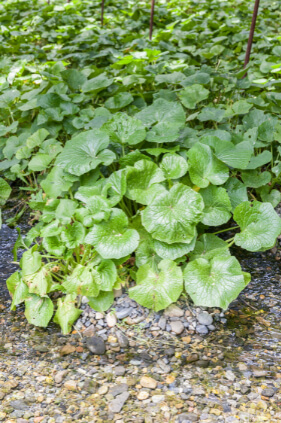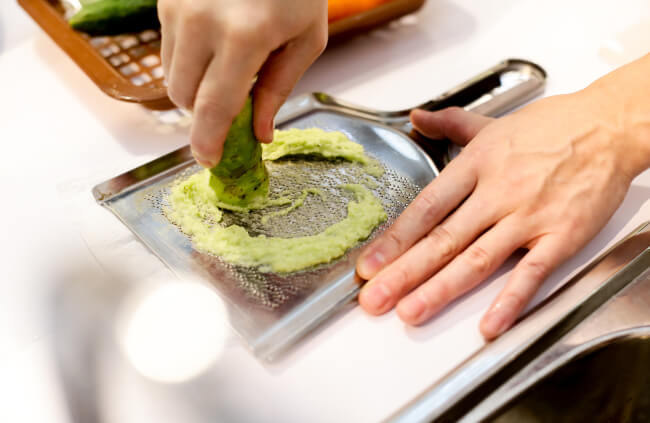How to grow wasabi plant, your immediate response is probably – “Why would you?” But you’re a gardener and growing things is fun, isn’t it? And what would be more interesting than trying to grow something you’ve never had in your garden before – and the neighbours probably haven’t either.
In fact, I could categorically state that most gardeners – certainly most western gardeners, anyway – have never grown wasabi (Eutrema japonicum, commonly known as Japanese horseradish). Not because they haven’t wanted to but mainly because it’s never been high on the list of things to grow.
More...
Growing Wasabi (Japanese Horseradish)
Radishes and horseradishes, including the daikon, English horseradish and even the wasabi are an interesting dilemma for the home gardener. We’re happy to grow vegetables in our patches that we can dig up or cut off and then use as the basis for the evening meal.
Not so with this family of vegetables. You’re not likely to see the kids hoeing into a plate of wasabi any more than they’re likely to refrain from the PlayStation during school vacation.
No, these are grown purely as accompaniments. So, you don’t need to set aside a whole row for growing wasabi. A little corner of the veggie patch will suffice. And, if you’re able to grow swedes, turnips, potatoes, or any other rooting vegetable then growing wasabi won’t be a challenge for you.

Perfect Conditions for Growing Wasabi
As a native to Japan (hence the name Japanese horseradish) these tubers can tolerate most conditions but prefer shaded, well-drained areas for success. Yet while light isn’t a big factor in their growth, water is. So, if you have any damp, shady areas within your vegetable patch then you’ve found the ideal tenant.
Those gardeners who have a hydroponic or aquaponic setup in their backyard will find these veritable residents. While wasabi is not as reliant on water intake as rice it certainly requires far more of it than most of your other tubers.
Don’t plan on harvesting this tuber any time soon, either. It takes between 18-24 months before the root is of a size worthy to be dug up. Which explains why it’s so expensive in the marketplace fetching more than $100 per kg.
Growing wasabi in the home garden is not an impossible mission but finding seeds to get you started may be. It’s unlikely that the major seed producers will offer this anytime soon so your best bet may be to visit a local Japanese store to make enquiries. They may stock it or at least be able to import it for you.
How to Use Wasabi

After your two years of lovingly attending to this plant it’s time to reap the benefits and harvest it. But once it’s out of the ground, what are you supposed to do with it?
The Japanese dry the root out and then grind it into a fine powder. As a whole dried root, it can be kept for years but once ground has a limited lifespan of a few months – like most spices. The powder is then mixed with water to create a puree and can then be used as an accompaniment for almost anything, but authentically for sushi and sashimi.
So, will it make an entrance into your veggie patch? Or is it likely to just be admired from the sidelines.
Wasabi Peas
You may be excused for thinking that wasabi is grown by peas if you read most of what’s available on the web. However, wasabi peas are just a fashionable gourmet extravagance rather than where this paste is derived.
Basically, wasabi peas are merely peas (whether you use snow, baby, dried or even sugarsnap) that have been marinated in wasabi paste. They seem to be the beef jerky of the 21st century but certainly not for the faint-hearted.
Published on June 7, 2023 by Gary Clarke
Last Updated on February 14, 2024




